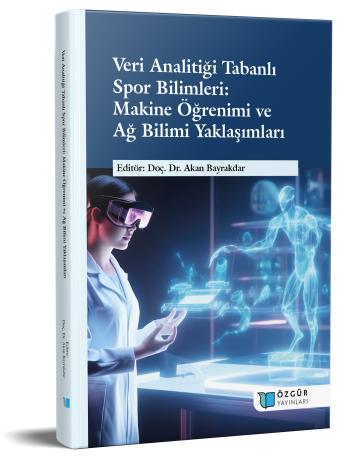
Data Analytics Based Sports Science: Machine Learning and Network Science Approaches
Synopsis
Contemporary sports sciences are undergoing a significant transformation through digitalization and data-driven analytical techniques. Applications of artificial intelligence and machine learning are gaining increasing importance in optimizing athletic performance, preventing injuries, and supporting strategic decision-making processes. Network science techniques, in particular, offer powerful tools for understanding complex player interactions, especially in team sports. This book aims to open new horizons in the field by addressing both the theoretical foundations and practical applications of data analytics-based approaches in sports sciences.
The book is structured into five distinct chapters, each covering different dimensions of data-driven analytical techniques in sports sciences. The first chapter focuses on the use of network science methods in football analysis. It delves into topics such as analyzing passing networks during football matches, determining player centrality metrics, and evaluating team strategies using network-based approaches. These methods provide a scientific foundation for the tactical analysis processes in modern football.
The second chapter discusses football match analysis methods and the emerging technologies in this field. It examines a wide range of analytical techniques—from observational analysis to video analysis, from notational analysis to AI-supported methods—that contribute significantly to performance enhancement processes. This chapter brings modern perspectives to the multifaceted analysis of football.
The third chapter explores the software tools used in football match analysis and their integration with network science techniques. AI-based analysis platforms such as SciSports, MathBall, Fstats, and AI-Powered Sports provide data-driven evaluations of team performance. Additionally, the applications of network analysis software such as Graphviz, RStudio, Gephi, and Cytoscape in football competitions are examined in detail.
The fourth chapter addresses the use of machine learning and artificial intelligence techniques in predicting sports injuries. AI models aimed at preventing sports injuries and optimizing rehabilitation processes offer innovative solutions for maintaining athlete health. These analyses, supported by wearable technologies and biomechanical data, aim to safeguard and enhance athlete performance.
The final chapter explores the evaluation of dance movements using machine learning. Innovative applications such as AI-supported dance movement recognition and choreography generation contribute to the digitalization of the art of dance. The role of deep learning-based models in assessing movement quality and identifying dance styles is also discussed in this chapter.
This book serves as a comprehensive resource for sports science professionals, coaches, sports analysts, and researchers. While presenting scientific methods that contribute to optimizing athletic performance through data analytics-based approaches, it also provides detailed insights into the integration of artificial intelligence and network science techniques into sports sciences. We hope this work will contribute to the advancement of innovative methods in the field and inspire future research endeavors.
Best regards

